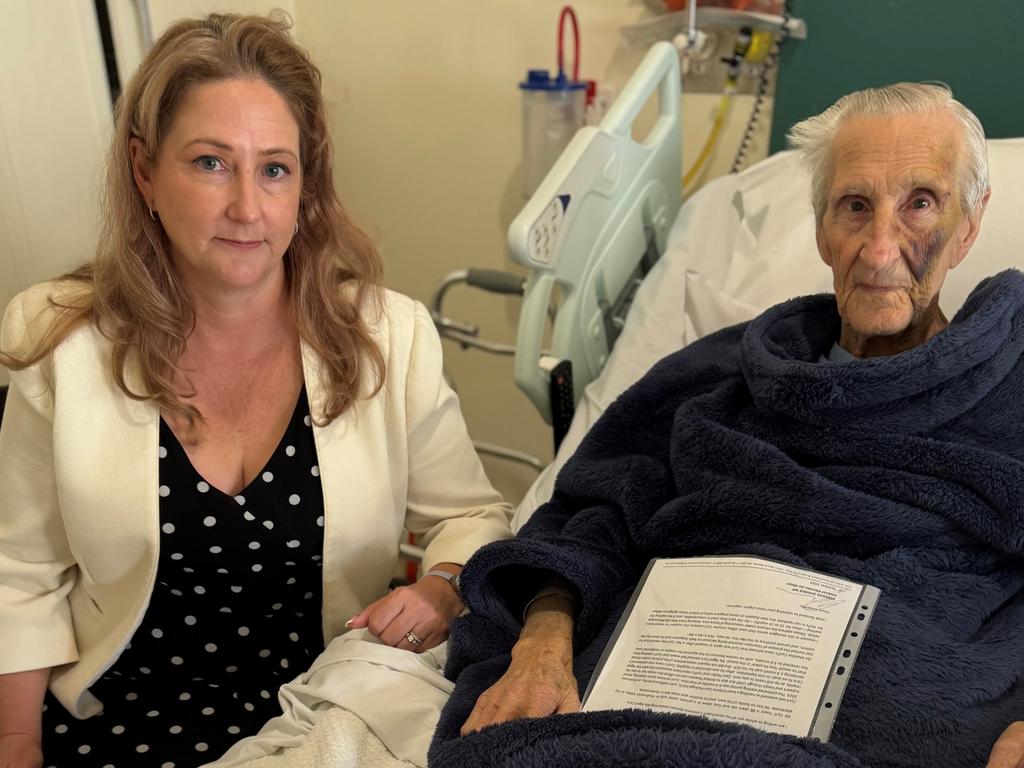‘A wake-up call to a profound failure’: last plea from a dying woman
Devastated by a profound lack of care after being diagnosed with a terminal illness, a Queensland mother, wife and academic spent some of her precious final time writing of her shocking experience. She died on Monday.

*The author chose to remain anonymous to protect her privacy. Please also read her family’s note below.
My final days with a terminal illness have been in relentless pain while my family watches helplessly.
Not because relief is impossible but because I live too far from care.
This is the devastating reality for terminally ill patients across rural Australia, where the tyranny of distance transforms palliative care into an endless journey of suffering.
As our population ages and dedicated healthcare workers remain shackled by bureaucracy, these stories of suffering will only multiply.
The following is a wake-up call to a profound failure – that we failed our deepest responsibility: to care for one another at our most vulnerable.
My family members and I were exhausted sitting in a busy emergency department, three hours from home.
I was in pain.
A nurse asked me to share 20 years of medical history right there in the crowded waiting room, within earshot of complete strangers.
There is no private space, no quiet corner for sensitive conversations. Just you, your medical history and a room full of onlookers.
This breach of privacy does more than just violate dignity – it stops people from speaking openly about their health, especially those from diverse cultural backgrounds who already may feel hesitant about sharing personal information.
Even in the emergency ward, life-changing diagnoses are delivered behind thin curtains that do little to muffle conversations about deeply personal matters.
This environment begs the question: has patient privacy become merely a theoretical concept rather than a practised principle?
What happened next defied belief.
After hearing the devastating news that everything in my body was killing me and learning that a biopsy was needed to determine the next steps, I might have expected comprehensive support and guidance.
Instead, I was sent home with just a small prescription for pain relief and the discharge summary.
A medical report was sent to a retired GP’s address – just because the report had to be sent somewhere.
The situation became even more absurd a week later.
Despite being unable to walk three steps unassisted and a request for telehealth, I was asked to attend a face-to-face consultation that was a three-hour drive for a biopsy follow-up.
The outcome was heart-wrenching: nothing more could be done for me.
Then I was given another inadequate pain prescription – this time without refills. The doctor assumed a palliative discharge plan was arranged. It wasn’t.
For someone who can barely move and lives hours from medical care, the complete lack of follow-up support after discharge is not just an oversight – it’s a systemic failure.
The hospital’s social worker involvement was brief and insufficient: a discussion of “offboarding” – as if preparing for death were as simple as leaving a job – and a handful of printed documents.
A simple helpline number was handed over, as if that alone would bridge the gap between hospital discharge and dignified end-of-life care, and little else.
Even more alarming, no one checked whether my elderly husband could manage the physical demands of caregiving.
No immediate support was arranged, no compassionate support, no real help.
Given that one box of pain relief handed over at discharge proved woefully inadequate, telehealth seemed like the obvious solution.
But here’s the catch: doctors can’t prescribe stronger pain relief through telehealth because of concerns about misuse.
The alternative? Another in-person visit – which is nearly impossible for someone like me who now can barely walk and lives 30 minutes from the nearest clinic.
A GP appointment was finally scheduled but it was scheduled a week later – an eternity for people like me living with constant, severe pain.
While telehealth works well for routine check-ups, it completely fails palliative, in-home patients requiring immediate, intensive pain management.
You would think that being discharged with a terminal illness would trigger immediate support, especially for someone needing help with basics such as walking and bathing.
Think again.
More than 10 days after my return home, a call to MyAgedCare revealed there wasn’t even an account set up.
While they helped create one and suggested some telehealth GPs, the real support needed – actual care services – was out of reach without an assessment.
The wait time? Twelve to 15 months. The cruel reality? I have a short time to live.
Finally, I made a desperate call to the managing director of Community Home Australia, Dr Rodney Jilek, someone known for putting residents and patients before paperwork.
This changed everything.
Within 24 hours, a telehealth consultation had been arranged with a regional palliative care specialist GP and processing started for the necessary paperwork. Things finally started moving.
Having witnessed the palliative care failures firsthand, I must ask: Why is privacy treated as an afterthought?
Why are terminally ill patients sent home without proper care plans?
Why aren’t hospitals and social workers ensuring support systems are in place?
Why can’t palliative care organisations provide immediate help?
Why force dying patients to navigate complex bureaucracy when time is precious?
If we truly value dignity in healthcare we must demand better access and proper support for people’s final days, regardless of where they live or their ability to navigate complex systems.
The harsh reality is that this story isn’t breaking news.
Across Australia, our aged care, disability and palliative care sectors are crumbling under the weight of systemic failures.
Our ongoing research September-November 2024, which includes interviews with nearly 90 industry leaders, paints a disturbing picture.
The same issues keep cropping up: endless paperwork, poor discharge planning, not enough workers and a system that seems designed to create obstacles rather than provide care.
These aren’t just statistics or policy issues – they’re stories of real Australians like me, suffering every day.
We are the vulnerable people being pushed into a broken system.
If the goal is to reduce hospital bed blocking, it’s failing spectacularly.
The consequences are devastating – some turn to voluntary assisted dying, while others, feeling hopeless, take their own lives.
Even those who manage to access aged care face serious problems.
Severe staff shortages mean people like me often don’t get the attention and care we need.
Government cuts have slashed palliative and aged-care services, forcing people to rely on limited telehealth options or leave their communities entirely to get essential care.
These are all symptoms of the same failing system.
The time for change will come too late for me.
But the system needs to be fixed today for the patients of tomorrow.
Note from the author’s family
Our mother and wife was an intelligent, loving and lively 74-year-old.
She had been diagnosed with cancer some 22 years ago but after intense treatment was pronounced to be in complete remission.
Life was good. She was a busy and much-loved Bond University academic whose passion for housing, town planning and – perhaps ironically – access to appropriate in-home care after a life-changing health event is reflected in her many research papers.
She had no hint of any health issues until just after Christmas, when she was struck down by abdominal pain. Pushing on, as was her way, she returned to work in late January but the pain became increasingly debilitating.
On January 28, we were all devastated when the diagnosis was that cancer had metastasised. It was then, through the haze of disbelief, the specialist gave us the news no one wants to hear: “Nothing can be done for her.”
Less than a month later, on the afternoon of February 24, this beautiful person, a cherished teacher and friend, passed away.
She will be missed incredibly, and we hope that the words she penned during her painful final days will prompt change so nobody else goes through the traumas she, and we, did.



To join the conversation, please log in. Don't have an account? Register
Join the conversation, you are commenting as Logout